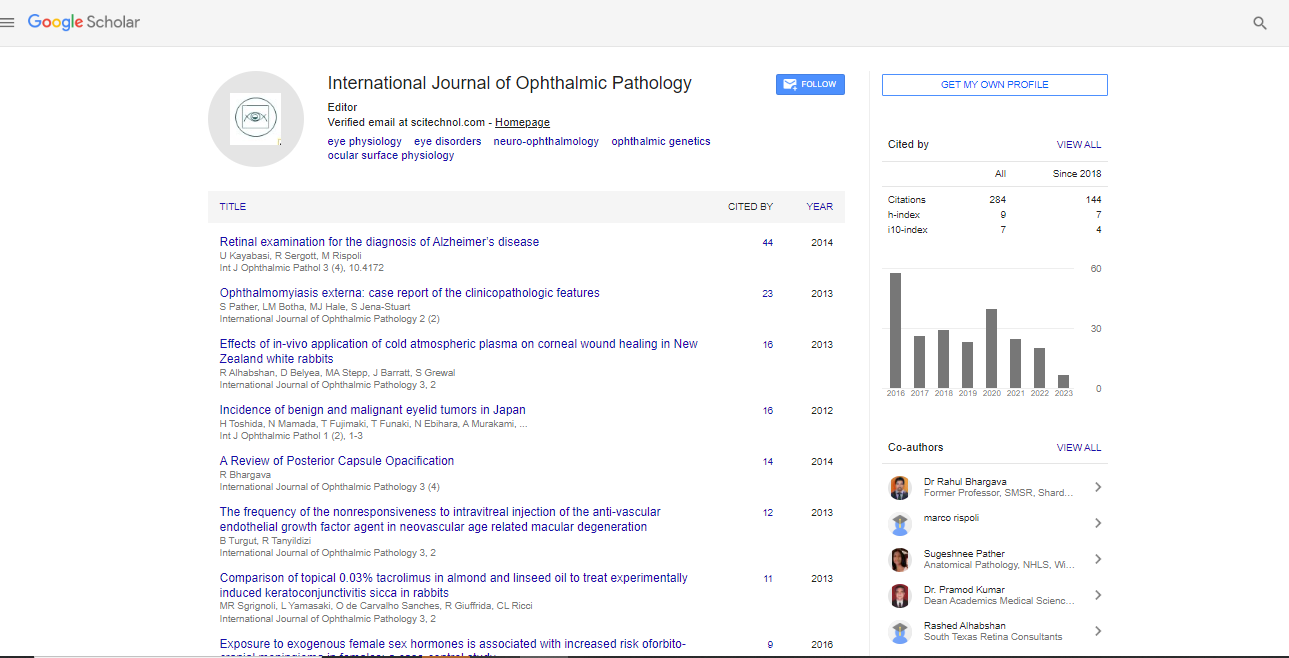Impact of lens characteristics on intraocular lens dislocation after cataract surgery: A population study
Amalia Mester
LKH Hochsteiermark, Austria
: Int J Ophthalmic Pathol
Abstract
Purpose: To assess and identify the impact of Intra Ocular Lens (IOL) characteristics on IOL dislocations after cataract surgery. Methodology & theoretical orientation: Cox proportional-hazard regression models were used to retrospectively assess the influence of IOL characteristics on IOL dislocations. Patients that underwent cataract surgery at the Medical University Graz (Austria) between 1996 and 2017 were included. Findings: 68 199 eyes of 46 632 patients (60.2% women, mean age: 73.71 SD ± 10.82 years) underwent uncomplicated phacoemulsification during the study period. 111 patients (0.16%) had In-The-Bag (ITB) and 35 (0.05%) Out-of-The-Bag (OTB) dislocations. Hydrophilic IOLs (HR 2.35; 95% CI, 1.45-3.80), quadripode IOLs (HR 2.01; 95% CI, 1.04–3.86) and haptic angulation (HR 1.61, 95%, 1.04-2.48) were associated with a higher risk. A lower risk was observed for three-piece-IOLs (HR 0.58, 95% CI, 0.34-0.98) and larger overall IOL diameter (HR 0.79, 95% CI, 0.66-0.95). For OTB dislocations, the HR associated with a higher risk was 18.81 (95% CI, 5.84-60.58) for silicone IOLs and 2.12 (95% CI, 0.62-7.29) for hydrophilic. IOLs with a larger overall IOL diameter (HR 0.40, 95% CI; 0.25-0.63) showed a lower risk. Conclusion: Hydrophilic IOLs, quadripode IOLs and haptic angulation IOLs showed an increased risk for ITB dislocations. Three-piece IOLs and a larger overall diameter were associated with a lower risk. Risk factors for OTB dislocations were silicone IOLs, hydrophilic IOLs and a smaller overall IOL diameter.
Biography
Amalia Mester is an ophthalmologist from Bruck/Mur, Austria. She is currently completing her residency.
 Spanish
Spanish  Chinese
Chinese  Russian
Russian  German
German  French
French  Japanese
Japanese  Portuguese
Portuguese  Hindi
Hindi 